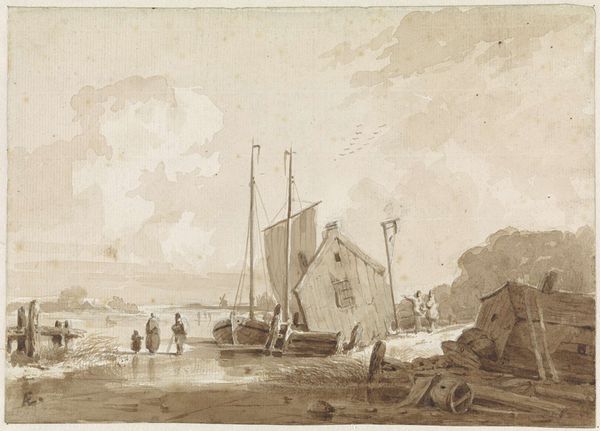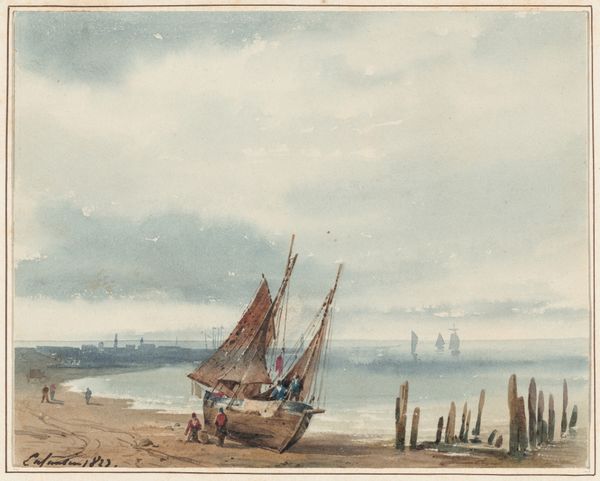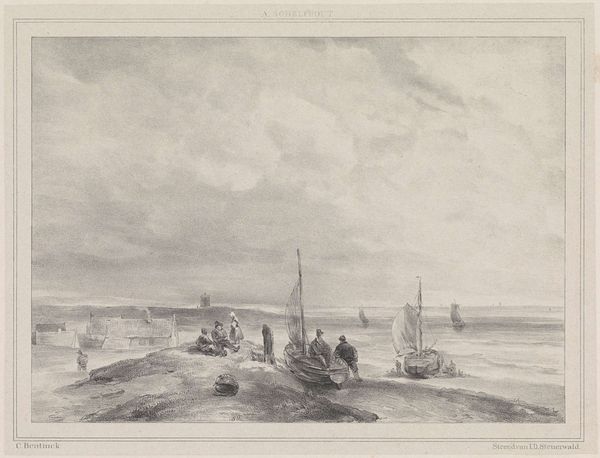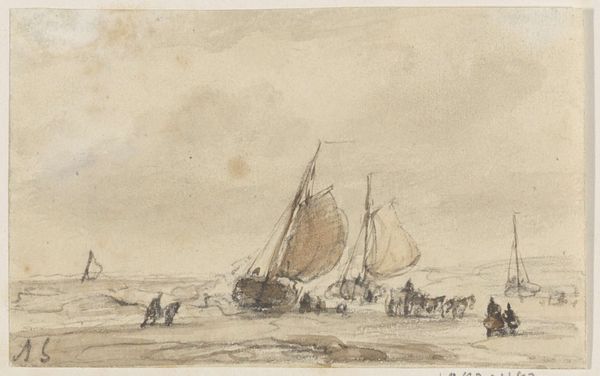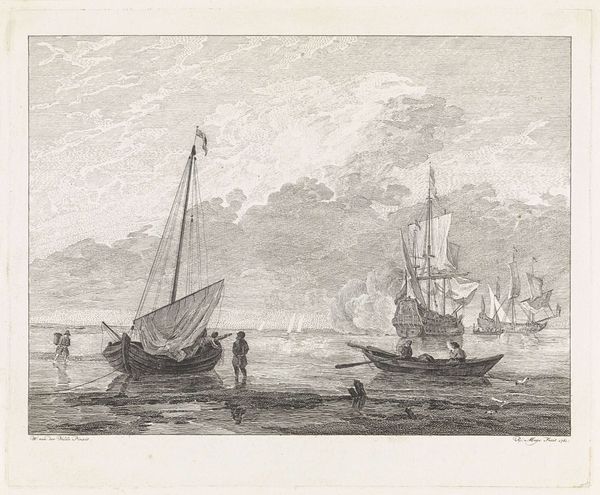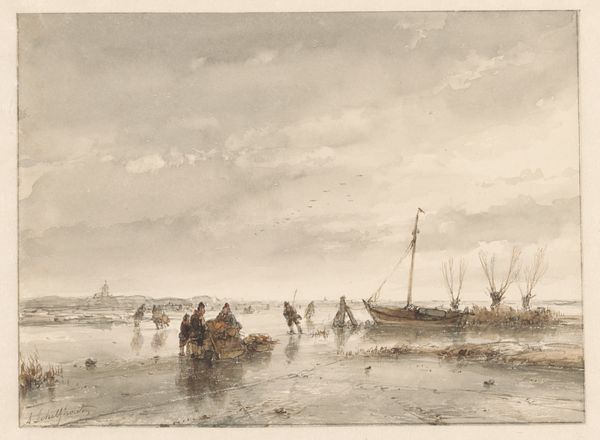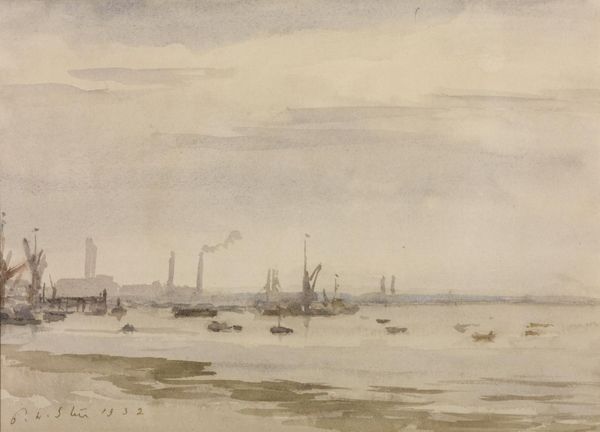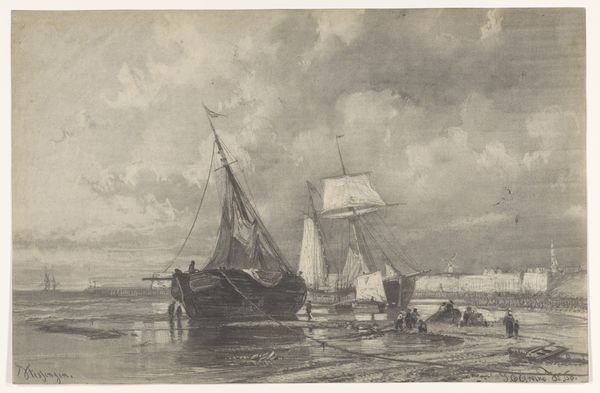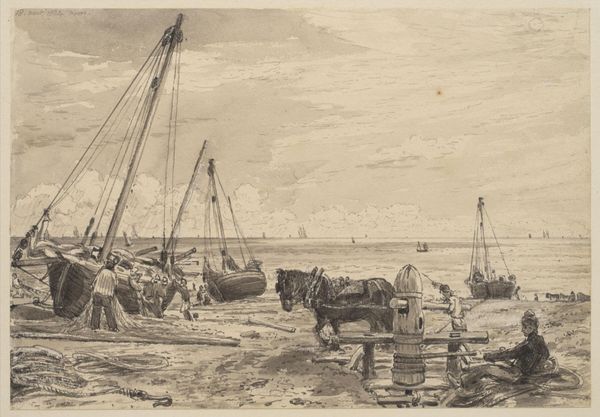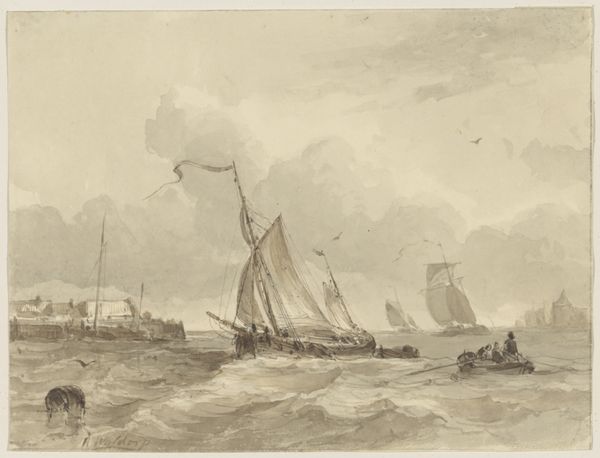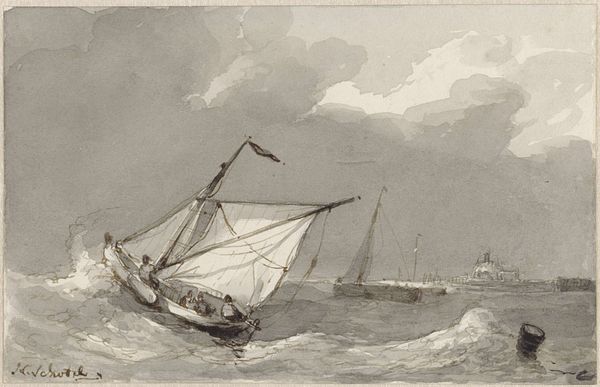
plein-air, watercolor
#
dutch-golden-age
#
plein-air
#
pencil sketch
#
landscape
#
watercolor
#
romanticism
#
genre-painting
#
realism
Dimensions: height 211 mm, width 242 mm
Copyright: Rijks Museum: Open Domain
Curator: Standing here, we're looking at Hendrikus van de Sande Bakhuyzen’s "View of the Beach at Scheveningen," created sometime between 1805 and 1860. It's a delicate watercolor and pencil sketch, held right here in the Rijksmuseum. Editor: My initial impression is quiet melancholy. The muted colors, the vast sky... it feels like a fleeting moment captured on a cold, windswept day. Curator: Absolutely. Scheveningen, as a coastal town, held significance as a place of labor but also increasingly as a destination for leisure. This piece hints at both aspects, doesn't it? See how Bakhuyzen renders figures seemingly engaged in everyday tasks beside the serene presence of boats gently wading into the shores. It represents genre-painting quite distinctly. Editor: I am particularly drawn to the boats. The rigging and the details of their structure give them symbolic significance, linking people to the sea and the possibilities it suggests, like exploration or, perhaps, facing unseen risks. But consider what the shoreline symbolizes in this painting; look at how liminal this world is with its grey space! Curator: It's interesting you mention the symbolic nature of it because I see it too. Notice how the human presence is carefully rendered with such subtlety but evokes the importance of figures like laborers or everyday townspeople within landscape imagery and Romanticism more generally. The artist blurs the boundaries of daily life and Romantic painting! It seems as though the water and light create a mood or visual state that evokes a kind of psychological space, don't you think? Editor: Precisely. And consider the vantage point too—how Bakhuyzen invites the viewer to witness the cultural movement and how seaside customs develop at the time. With such meticulous realism it acts as an important record, capturing the zeitgeist surrounding Scheveningen at a certain historical turning point. This also ties directly to landscape conventions throughout the Dutch Golden Age. Curator: Well, reflecting on this evocative sketch, I am drawn back to this quiet scene in its psychological sense: as if the watercolor suggests transience itself, an everyday occurrence like being swept up by something bigger than us! Editor: It indeed presents a potent reminder of the passage of time, inviting us to ponder our own place within this ever-evolving cultural tapestry.
Comments
No comments
Be the first to comment and join the conversation on the ultimate creative platform.
